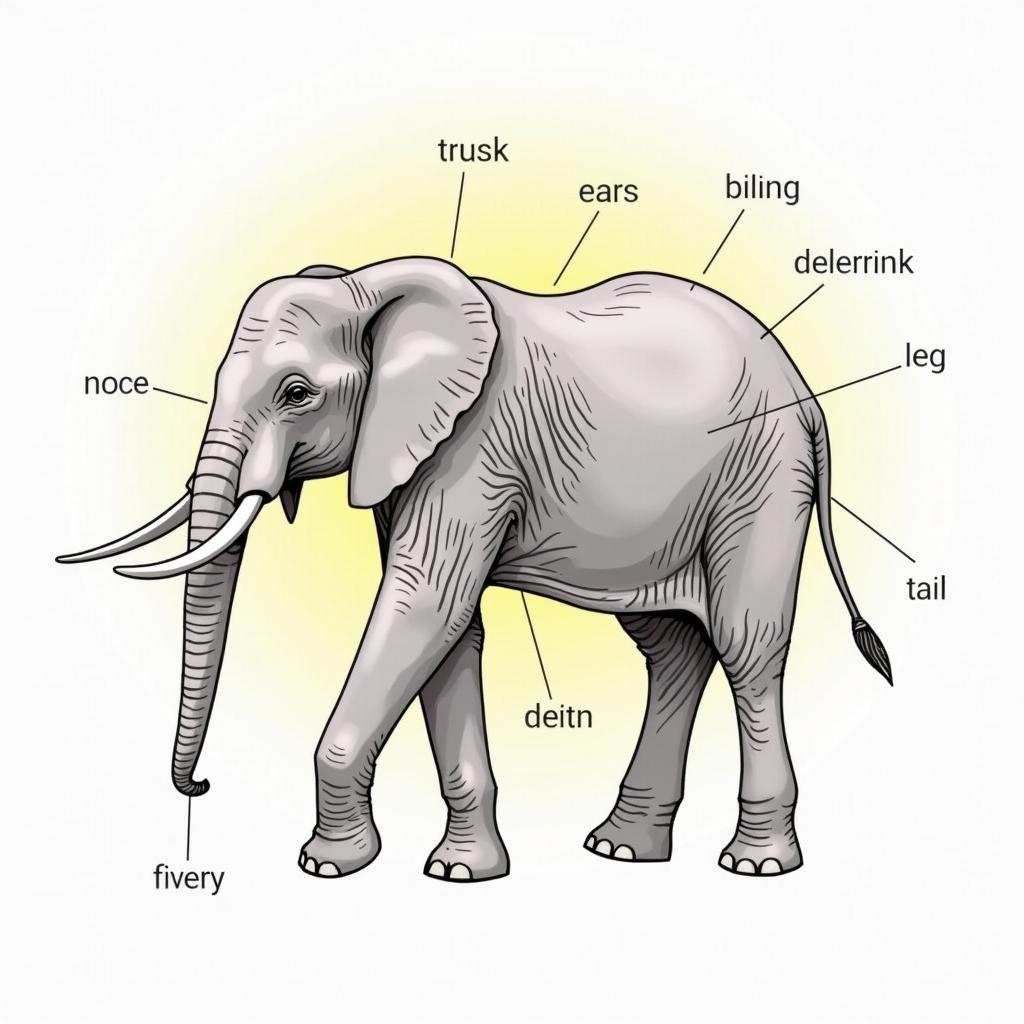The African Elephant Diagram: A Comprehensive Guide to Understanding These Majestic Creatures
The African elephant is one of the most iconic and recognizable animals on Earth. These majestic creatures are a symbol of strength, wisdom, and resilience. Understanding their biology, behavior, and challenges they face is crucial for their conservation. This comprehensive guide will delve into the anatomy and physiology of the African elephant, using a diagram to illustrate the key features that make these animals unique.
Anatomy of an African Elephant: A Detailed Breakdown
African elephants, like all mammals, possess a complex anatomical structure. Understanding these features is essential for comprehending their behavior and ecology. The diagram below provides a visual representation of the major anatomical parts:

The Trunk: A Multifunctional Tool
The trunk is perhaps the most remarkable feature of an African elephant. This elongated nose is incredibly versatile, serving multiple purposes.
- Feeding: The trunk is used to grasp and bring food to the mouth, delicately plucking leaves, fruit, and grasses.
- Drinking: The trunk acts as a pump, sucking water into the mouth and spraying it down the throat.
- Communication: Elephants use their trunks to trumpet, rumble, and make other sounds, conveying emotions and warning signals.
- Sensing: The trunk is covered in sensitive receptors, enabling elephants to detect smells and even touch objects with remarkable precision.
“The trunk is an extension of the elephant’s brain, a tool of incredible dexterity and sensitivity,” says Dr. James Karanja, a renowned wildlife biologist. “It’s essential for their survival, enabling them to navigate their environment, find food, and communicate with each other.”
Tusks: More Than Just Ornaments
Tusks, the elongated incisor teeth of elephants, are not simply ornaments but serve crucial functions:
- Digging: Tusks are used to dig for water, minerals, and roots.
- Defense: Elephants use their tusks to protect themselves from predators.
- Display: Tusks play a role in social displays, especially among males during mating season.
“Tusks are a valuable tool and a symbol of an elephant’s age, experience, and social status,” notes Dr. Karanja. “Unfortunately, the illegal poaching of tusks has decimated elephant populations across Africa.”
Ears: Thermoregulation and Communication
The large ears of an African elephant serve two primary functions:
- Thermoregulation: Elephants use their ears to regulate their body temperature. Blood flows through the extensive network of blood vessels in their ears, releasing heat into the environment.
- Communication: Elephant ears can be used to signal emotions and intentions, flapping them during displays of aggression or excitement.
Legs: Supporting a Massive Frame
The powerful legs of an African elephant are adapted to support their immense weight. Their thick, columnar legs provide stability, allowing them to move effortlessly across various terrains.
Tail: Balance and Fly Swatting
The tail of an African elephant acts as a counterbalance, helping maintain stability and prevent falls. It also serves to swat away pesky flies and other insects.
The African Elephant Diagram: Unraveling the Mysteries of These Magnificent Creatures
The African Elephant Diagram provides a visual foundation for understanding the anatomy of these magnificent creatures. It highlights the intricate design and adaptations that allow elephants to thrive in diverse environments across the continent.
Conclusion
The African elephant diagram is a valuable tool for gaining a deeper understanding of these remarkable animals. It showcases the unique adaptations and complex features that have allowed elephants to endure for millennia. As we learn more about these creatures, we can better appreciate their importance and take action to protect them from the threats they face, such as habitat loss, poaching, and human conflict.

![The 2018 AFCA conference in [Tên thành phố, quốc gia]](https://omenkamag.com/wp-content/uploads/2024/10/african-fine-coffee-association-2018-conference-670473.webp)